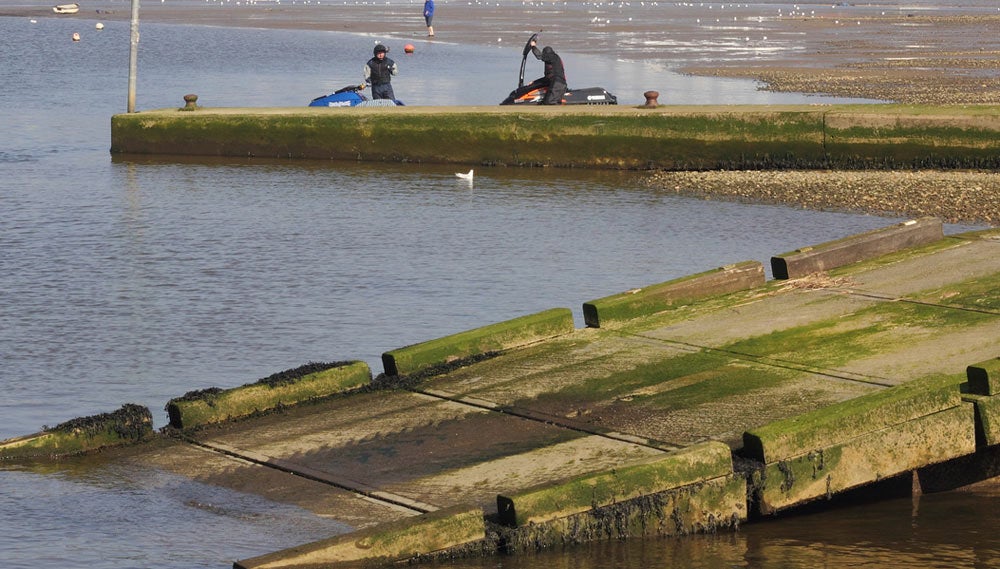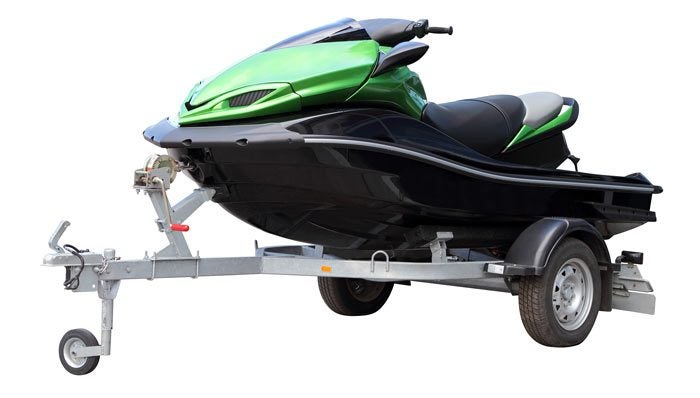How To Launch Your PWC Like A Pro
Don't be "that guy" at the ramp this summer
New PWC owners have a lot to learn, especially if they’re also new to boating in general. And one of the most stressful of those lessons is often that first trip to the launch ramp. While it may seem like a no-brainer, for many enthusiasts the reality is often quite different. We jackknife the trailer trying to back down into the water, we hold up the crowd while loading or unloading gear or releasing that one last tie-down, we skid our tires on the slippery pavement after backing too far into the water…the list is seemingly endless; and frequently embarrassing.
The launch ramp, however, doesn’t have to be a source of anxiety or frustration. In fact, the following tips are designed to allow you to spend as little as time possible there…and maximize your time having fun on the water. Learn them, practice them a few times and we promise you’ll never give much thought to the ramp again.
Practice Makes Perfect
There’s a reason all those teachers and coaches drilled lessons into you as a kid. And that reason is that practice does make perfect, or at least fairly close to it. And the biggest thing you need to practice before even going near a launch ramp is how to back up your trailer and have it go exactly where you want it to. And that practice shouldn’t take place anywhere close to an actual launch ramp.
A better location is a wide-open parking lot, like a business closed for a weekend, a quiet section of a park, any place that’s not busy and where you’ll be under no pressure to perform. Once there, don’t immediately try to perform some precision maneuver. Just spend some time backing up your trailer and slowly turning, learning how the trailer responds to your input at the wheel and the angle of your front tires. You can track the trailer’s progress in several ways. Some people like to keep their eyes forward, alternating their view between the rear and side view mirrors to monitor their progress as they reverse. Personally I find that difficult, and prefer to turn and look over my right shoulder, left hand on the wheel and right hand on the passenger seat back. It requires a bit of twisting, obviously, but that way I can look out the rear window while still being able to check the right side mirror, or turn forward and check the rearview and driver’s side mirrors when necessary.

The challenge for most is that, in reverse, the trailer responds opposite to what you probably expect. Turn the wheel clockwise and your car may back to the right but the trailer will pivot on the hitch ball and head the opposite direction. The key is to simply get used to this “reverse” way of thinking, and ultimately make constant, subtle changes to keep the trailer heading in the appropriate direction without requiring an exaggerated correction. Need that correction? It’s often best to stop, pull forward to straighten things out, and then try it again.
If you’re in a spot with lined parking spaces, use the lanes to simulate the launch area, backing into a lane or around a corner. You can also add cones, water jugs, or virtually any number of items to mark corners, dock areas, etc. Can’t always see the back of your trailer, or the corners? It’s a problem that will get amplified as you back over the first downward “hump” of many launch ramps. Consider adding corner guide posts, or even removable flags, to help you keep tabs on your trailer during those brief moments it may fall out of sight. If you have a hatchback or SUV, you may also be able to open the back gate for better vision. Just make sure it clears your trailer; we don’t want any scratches on our conscience.
Plan Ahead…Your Fellow Boaters Will Thank You
Once you’re comfortable, and we mean completely comfortable with how your trailer will handle, turn your attention to how to get on and off the ramp as quickly and efficiently as possible. That means figure out what gear you’ll load aboard before a ride, what straps need to be released, whether or not the drain plug is installed, whether or not your craft is ready to start…all are things that discourteous boaters do while their craft is hogging the ramp lane and you want to avoid. Many ramps have a marked pull-off that allows you time to gear up. If not, simply pull off out of the way of others. Get everything onboard, release the appropriate straps, make sure that the plug is in and your lanyard is connected, start the engine briefly so that it’s ready to go, etc.
Ideally you’ll have a buddy or family member in the saddle and at the controls, with lifejacket on, ready to back the craft off and get out of the way while you pull off the ramp and park your car.

One big consideration at this stage is whether to release ALL of your tie-down and winch straps. If your bunks aren’t slick and your ramp not steep, it’s a timesaver for sure. But if there’s ANY chance your craft may slide off the trailer, keep the bow secured loosely with the winch strap. Once the trailer is almost fully in the water, the driver can put the vehicle into park (and secure the emergency brake), get out of the vehicle briefly, and release the strap before hopping back in the car and completing the launch.
Novice trailer boaters often ask just how far to back the trailer into the water. The answer can depend on just how “stuck” your craft is to the trailer bunks, but a good rule of thumb is to back your trailer into the water until just the tops of the fenders are visible above the surface. If your craft doesn’t just slide into the water, start the engine and apply a little throttle to coax it on its way. If that doesn’t work, the driver can also back just a little bit more down the ramp until the craft can be freed. Once the craft is launched, the PWC driver can bring the craft around to a free section of dock or shoreline, while the tow vehicle driver can go and park the car.
When you’re ride is done, just reverse the procedure. Drop the tow vehicle driver off on the shore or dock, stay out of the way while he retrieves the car and gets in position at the launch ramp, and then drive the craft carefully onto the trailer bunks once the trailer is in position. Again, if your bunks have plenty of friction, you can then drive right off the ramp to the post-ride area to clean up and load up your gear. The safest alternative, however, is to quickly secure the bow winch strap first, just to make sure your craft stays put.
Get PersonalWatercraft.com in your Inbox!
Like PersonalWatercraft.com on Facebook
Comments
Most Popular

2025 Yamaha JetBlaster PRO 2-Up Review

Remembering the Sea-Doo XP

2024 Kawasaki Jet Ski STX 160X Review

Whatever Happened to the Wetbike?

2025 Yamaha JetBlaster Review














 Your Privacy Choices
Your Privacy Choices